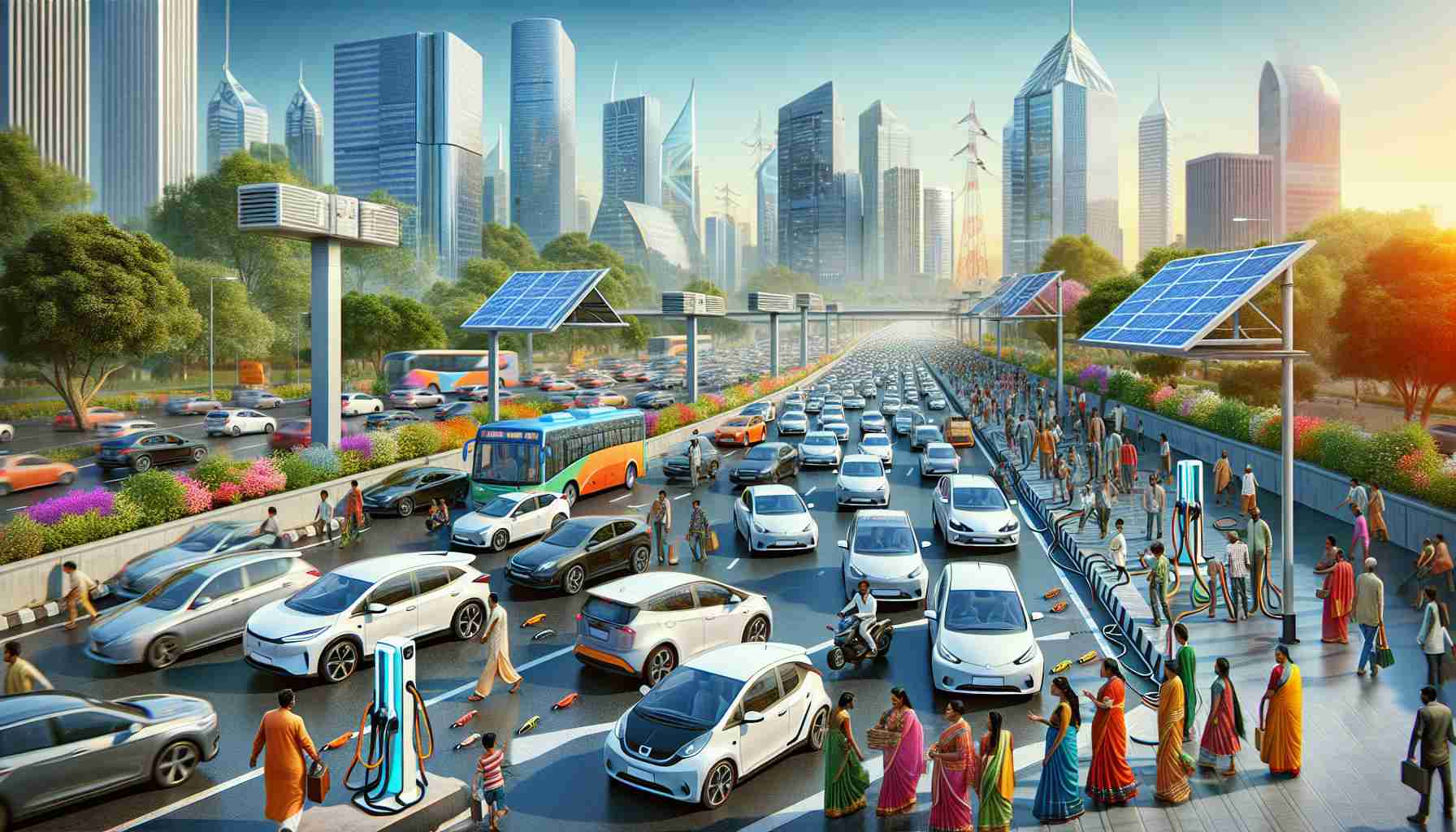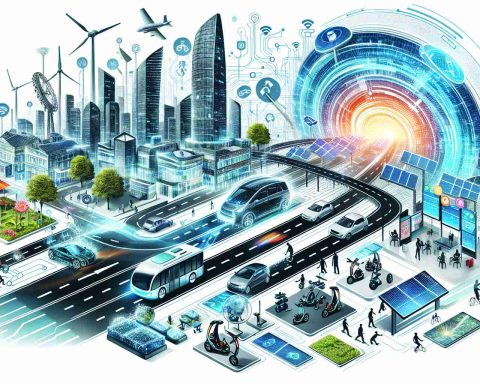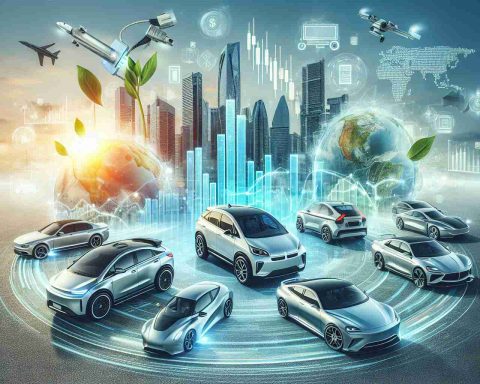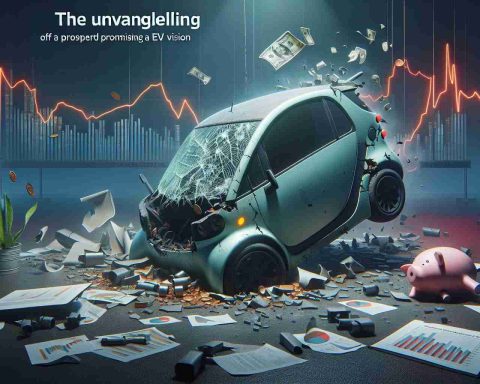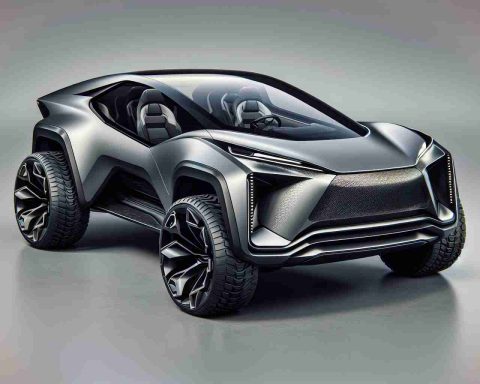The Surge of Electric Vehicles in India
The landscape of the Indian automobile market is witnessing a remarkable transformation as more manufacturers dive into the electric vehicle (EV) sector. Industry leaders agree that the influx of new players will dismantle existing barriers, driving the adoption of electric mobility across the country.
With significant contributions from major brands like Maruti Suzuki and Hyundai, new models such as the e VITARA and the Creta Electric are set to reshape public perceptions about EVs and their practicality. According to executives from various automakers, the collective focus on electric mobility is anticipated to cultivate greater consumer confidence and awareness.
The prevailing cautious attitude towards EVs is expected to dissipate as a broader array of manufacturers commits to this technology, reassuring customers that they are investing in the future of transportation. Tata Motors and Mahindra & Mahindra have also confirmed their initiatives to expand electric vehicle offerings, which will likely enhance the market’s overall growth.
Looking towards the future, experts predict that the penetration of electric vehicles in India, currently around 2.5%, could notably increase by 2025. This shift is not only integral for the manufacturers but also vital for building an extensive ecosystem around electric vehicles, which is necessary for their sustained growth.
As we approach the new era of automotive development, the electric vehicle segment is poised for significant expansion, promising a cleaner and more efficient future for transportation in India.
The Broader Impact of Electric Vehicles in India
The surge in electric vehicles (EVs) in India transcends mere technological innovation, hinting at profound changes across society, culture, and the global economy. As India adopts EVs, there are potential shifts in consumer behavior and lifestyle that could redefine transportation norms. The increasing acceptance of EVs signifies a cultural pivot towards sustainability, prompting citizens to align their choices with environmentally friendly practices. This shift can enhance public transportation integration and support urban planning initiatives geared towards greener cities.
From an economic perspective, the growth of the EV sector is projected to create numerous jobs, from manufacturing to infrastructure development. This could bolster India’s position in the global supply chain of EV components, as seen with the country’s rising investments in lithium-ion battery production. India aims to be a significant player in the global EV market, which could lead to a competitive advantage as demand for clean energy solutions increases worldwide.
However, the transition to EVs is not without environmental considerations. A substantial uptick in electricity demand to power these vehicles could strain existing energy sources, particularly if they remain dependent on fossil fuels. Therefore, it is crucial for policymakers to invest in renewable energy systems to sustain long-term growth while minimizing ecological impact.
In the coming years, long-term significance will pivot on how effectively India can balance EV adoption with sustainable practices, potentially setting a benchmark for emerging markets globally. The country stands at a pivotal juncture, where its decisions today will shape the transportation landscape for generations to come.
The Electric Vehicle Revolution: India’s Path to Sustainable Mobility
The Surge of Electric Vehicles in India
The Indian automobile industry is undergoing a transformative shift as competition in the electric vehicle (EV) sector intensifies. With a plethora of manufacturers entering the market, the landscape of EV adoption is set to change dramatically, fostering a new era of sustainable mobility.
# Innovations Driving Change
Companies like Maruti Suzuki and Hyundai are leading the charge with innovative models such as the e VITARA and Creta Electric. These vehicles are not just adding to the inventory but are also reshaping consumer attitudes towards EVs, highlighting their practicality and appeal. The focus on EVs is expected to cultivate consumer confidence, dispelling misconceptions surrounding electric mobility.
Moreover, Tata Motors and Mahindra & Mahindra are also amplifying their electric vehicle strategies. Tata Motors has introduced the Tata Nexon EV, which has received positive reviews for its range and affordability, while Mahindra is working on future models that emphasize sustainability and performance.
# Market Trends and Predictions
As of now, electric vehicle penetration in India stands at approximately 2.5%. However, experts believe that this figure could rise significantly by 2025, potentially reaching 15% to 20%, driven by both consumer demand and government incentives. The Indian government has implemented policies such as the Faster Adoption and Manufacturing of Hybrid and Electric Vehicles (FAME) scheme to support this transition.
# Features to Look For
1. Longer Range: New EVs are expected to offer extended ranges, with some models projected to exceed 400 kilometers on a single charge.
2. Smart Connectivity: Many upcoming EVs will feature advanced connectivity options, enabling functionalities like remote diagnostics and over-the-air updates.
3. Affordable Pricing: Competitive pricing strategies are crucial, with efforts to bring down the cost of EVs through subsidies and local manufacturing initiatives.
# Use Cases and Real-World Applications
Electric vehicles in India are expected to serve various sectors, including public transport, commercial logistics, and personal commuting. The introduction of electric two-wheelers and three-wheelers has also gained momentum, addressing last-mile connectivity challenges in urban areas.
# Sustainability and the Future
The push for electric vehicles aligns with India’s sustainability goals, aimed at reducing carbon emissions and reliance on fossil fuels. The transition to EVs is expected to positively impact air quality and contribute to global efforts against climate change.
# Challenges and Limitations
Despite the optimistic outlook, challenges remain, particularly regarding charging infrastructure. The lack of widespread charging stations can hinder consumer adoption. However, investments in charging networks are on the rise, with both government and private players looking to expand accessibility.
# Conclusion
The future of electric vehicles in India looks promising, with major automotive leaders pushing for innovation and consumer awareness. As manufacturers ramp up their offerings and infrastructure improves, the shift towards a sustainable and efficient transportation system seems imminent.
For further insights on this automotive revolution, you can visit AutoPortal for the latest news and trends in the electric vehicle market.

